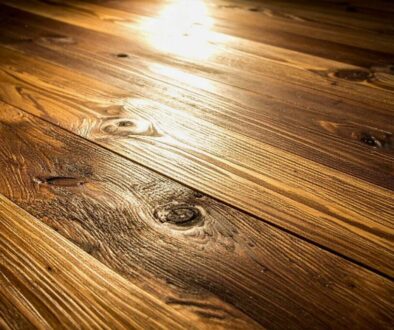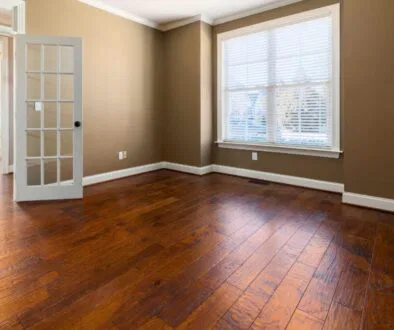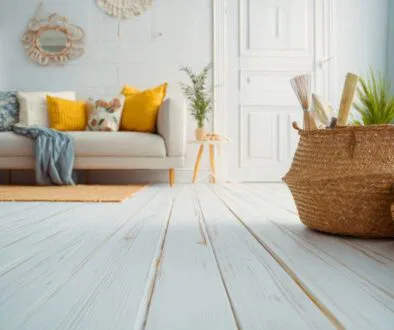Should Flooring Be The Same Throughout The House?
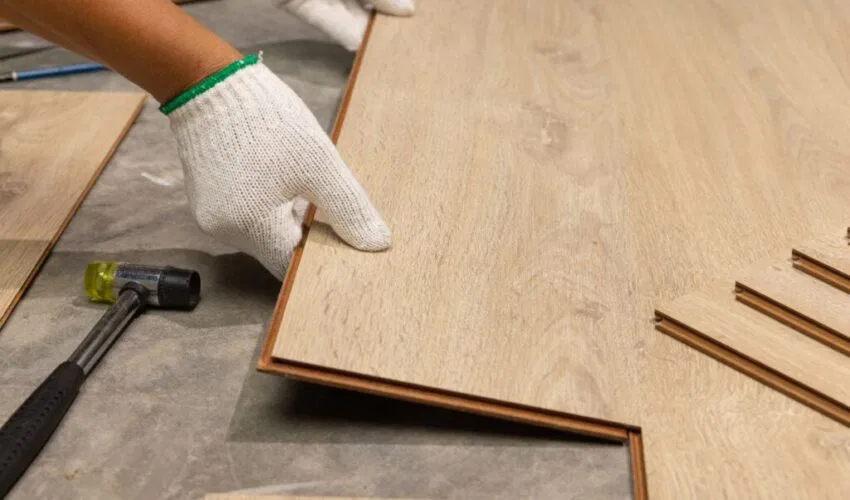
Published on Sept. 22, 2023
Choosing the right flooring is of utmost importance whether you’re building or renovating your home. But what most homeowners often fail to consider is whether to use uniform flooring all over the house.
So should flooring be the same throughout the house?
There are both pros and cons to using the same flooring throughout the house. In some cases, having uniform flooring is more practical. But there are also instances where using different types of flooring is more advantageous. Ultimately, it all boils down to your preference and circumstances.
To help you figure out whether you should use the same flooring for your entire home, we’ve listed down the pros and cons of doing so.
Benefits of Uniform Flooring
Here are some reasons why flooring should be the same throughout the house:
1. It unifies the design of your home
One of the most important benefits of having uniform flooring is continuity. If you’re aiming for a certain look and vibe, using the same set of flooring materials for every room in your house will really tie up the design.
For instance, if your home design is modern minimalist, whitewashed hardwood flooring will complete the look. Now, imagine if you throw in some dark-stained parquet flooring in one of the rooms. It will stick out like a sore thumb and you don’t really want that, right?
2. It makes your space large and airy
Continuity in flooring material and design makes your space appear larger than it really is.
Say you have an open space layout for your kitchen and dining room. Using the same type of flooring makes both spaces look connected which, in turn, makes them look bigger.
3. It makes cleaning and maintenance easier
If you have just one flooring material, you don’t have to use different types of cleaning materials or techniques. This makes cleaning or maintaining your floor a lot easier and cheaper.
4. It’s cheaper
Buying one type of floor planks in bulk is obviously cheaper than buying different types of planks in smaller quantities. This is why it’s much cheaper to install the same type of flooring all over your house.
5. It reduces the risk of tripping or falling
Different types of floors have different thickness levels. So when you install them, there’s always the chance that some planks will be thicker than the others. This, in turn, increases the chances of anyone tripping and subsequently falling over them.
But if you have uniform flooring, every plank will be of the same thickness. Meaning, it reduces the risk of trip and fall accidents.
Cons of Having the Same Flooring Throughout the House
Now that you know the benefits of uniform flooring, it’s time you hear of its disadvantages too.
1. It limits your flooring choice
If you have a large family, each may have different preferences for their bedroom floors. Besides, some rooms in the house may require a specific kind of flooring.
For example, the bedroom and nursery require flooring that doesn’t creak when somebody is walking around. The humidity in your kitchen may also differ from that of your living room. So it needs a floor that can withstand high moisture levels.
In short, you need to install a type of flooring that can satisfy all those requirements. And as you may have guessed, this can severely limit your options.
2. There’s a lack of diversity and uniqueness
Having similar flooring all throughout your home doesn’t really leave much room for creativity and diversity. In short, it can be plain and boring. If you’re the artistic or adventurous type, this may not sit well with you.
3. Replacing a broken section can be a challenge
Since the floor planks are all the same, replacing a broken one may require replacing entire sections of your floor. Besides, if you have a custom floor, replacing a broken plank will most likely require having one made especially for you. And as you can imagine, that won’t be cheap.
Should You Have the Same Flooring Throughout the House?
With the above pros and cons, all that remains is to answer the all-important question: should flooring be the same throughout the house? As I’ve said, it depends on your circumstances and preference. Though considering the following factors will help you determine the best option for you:
1. The layout of your home.
If you plan to have an open space, uniform flooring will be much more ideal. The continuity will make your home appear larger which is precisely the purpose of having an open layout in the first place.
But if your home has a closed layout with several internal walls, having different types of flooring will give you plenty of room for creativity. With different floor textures and designs, you can customize each room to give them distinct personalities.
2. Your home’s architectural design.
Aside from your home’s layout, you also need to consider its architectural design. If you’re going for a specific look, a uniform flooring will tie the design together. But if you’re a little more adventurous, you can also spice up your home design with different floorings.
3. The climate
Not many people will consider the climate when choosing their flooring. But you should, especially if you’re using hardwood.
As you know, humidity levels can cause the wood to expand and contract. So if you’re living in a humid area, there’s a good chance that your hardwood floor will buckle and warp.
Now if you have uniform floors, it would be pretty easy to determine the level of moisture your floor can only take. It’s also pretty easy to determine how you can prevent them from buckling.
But if you’re dealing with different types of floors, preventing all of them from buckling may take considerable time and resources.
(Related: The Top 10 Timeless Wood Floor Colors)
How to Combine Tile and Wood Flooring
A tile and wood floor combo can create a unique and visually appealing look in your home. Here are some short steps on how to combine tile and wood flooring:
Step 1: Plan the layout
Determine where you want to use tile and wood flooring. Consider the transition areas, such as doorways or room edges.
Step 2: Measure and prepare the subfloor
Measure the area where you will install the flooring and ensure the subfloor is clean, level, and free from any moisture or damage. Make any necessary repairs or adjustments.
Step 3: Install the tile flooring
Start by laying the tile flooring first. Follow the manufacturer’s instructions for the type of tile you use. Use a tile adhesive or mortar to secure the tiles and grout the joints once the adhesive has dried.
Step 4: Transition strip installation
Install transition strips where the tile and wood flooring meet. These strips help to create a smooth and seamless transition between the two types of flooring.
Step 5: Install the wood flooring
Once the tile is installed, you can lay the wood flooring. Again, follow the manufacturer’s instructions for the specific type of wood flooring you have chosen. Use a flooring nailer or adhesive to secure the wood planks in place.
Step 6: Finishing touches
After installing the tile and wood flooring, apply any necessary finishing touches, such as baseboards or trim, to cover any gaps or transitions.
Interior Design Rules for Flooring
When it comes to interior design, flooring plays a crucial role in setting the tone and style of a space. Here are a few key rules to consider when choosing and designing with flooring:
1. Consider the overall style
The flooring you choose should complement the overall style of the room. For example, hardwood floors can enhance the warmth and elegance of a traditional or rustic space, while sleek tile or polished concrete can work well in contemporary or minimalist designs.
2. Coordinate with the color scheme
Select flooring that complements the color palette of the room. It can either match or provide contrast to the walls, furniture, and other elements in the space. Consider the undertones and overall color balance to create a cohesive look.
3. Create visual flow
Maintaining continuity and flow throughout your home using consistent flooring materials, especially in open floor plans. This helps create a harmonious and connected feel between different areas.
4. Balance pattern and texture
If you want to incorporate patterned or textured flooring, ensure it doesn’t overwhelm the space or clash with other patterns in the room. Strike a balance by pairing busy patterns with simpler designs or neutral colors.
5. Consider the function and durability
Different rooms have different functional needs. Choose durable and easy-to-clean options such as tile or vinyl for high-traffic areas like entryways or kitchens. In bedrooms or living rooms, prioritize comfort and softness with carpeting or hardwood floors with rugs.
6. Pay attention to scale
The size of the room should influence your flooring choice. Large rooms can handle wider planks or larger tiles, while smaller spaces may benefit from smaller-scale patterns or narrower boards to create a visually balanced look.
7. Mind the transitions
When transitioning between different types of flooring (e.g., tile to wood), aim for smooth and seamless transitions. Use transition strips or other design elements to create a cohesive transition between different flooring materials.
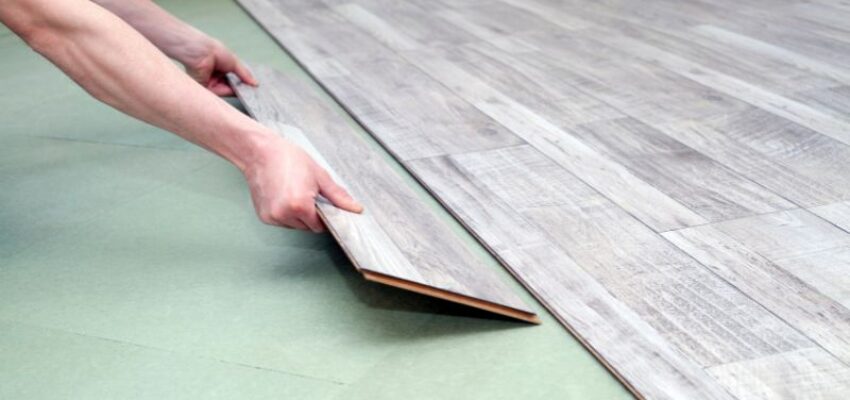
Tips on How to Match Hardwood Floors
When it comes to matching hardwood floors, here are a few tips to keep in mind:
1. Consider the existing woodwork
Consider the wood tones and finishes of any existing cabinetry, trim, or furniture in the space. Aim for a cohesive look by choosing hardwood flooring that complements or matches these existing elements.
2. Take inspiration from the room’s color palette
Look at the colors used in the room, including wall paint, furnishings, and décor. Choose hardwood flooring that aligns with the overall color scheme. For example, consider hardwood floors with warm hues like oak or cherry if the room has warm tones. Opt for cooler-toned woods like maple or ash if the room has cool tones.
3. Pay attention to wood grain and texture
Consider the grain pattern and texture of the hardwood floor you’re considering. A more pronounced grain and textured surface can add character and visual interest to the space. Match the level of grain and texture to other wooden elements in the room for a harmonious look.
4. Balance light and dark
When matching hardwood floors, think about balancing light and dark tones. Lighter hardwood floors can provide a nice contrast if you have dark furniture or cabinetry. On the other hand, darker hardwood floors can add depth and richness to the space if you have light-colored furniture.
5. Consider the style of the room
The style of the room can influence the type of hardwood flooring you choose. Opt for wider planks and distressed finishes for a traditional or rustic look. For a modern or contemporary space, sleek and smooth hardwood floors with narrower planks can work well.
6. Create a flow between rooms
If you have an open floor plan or connected spaces, aim for a consistent look and feel using the same or coordinating hardwood flooring throughout. This creates a sense of continuity and flow between rooms.
7. Seek professional advice
If you’re uncertain about matching hardwood floors, consult a professional interior designer or flooring specialist. They can provide expert guidance based on your specific space and style preferences.
Hire The Timber Experts For Your Next Project
Vintage & Specialty Wood should be your source of the highest quality timbers from around the world. When it comes to fabricating and installing reclaimed wood or specialty wood products in your home, we don’t cut corners. We offer many reclaimed wood and specialty wood products such as Douglas Fir, white oak, and much more. We also offer timber framing and wood flooring services as well. Contact our team today to speak to a timber expert about what Vintage & Specialty Wood can do for you.

This Blog Is Fact Checked
This content has undergone meticulous fact-checking by our team of internal experts. Gain a deeper understanding of the high editorial standards we uphold on our website here.

About The Author
Experience, exploration, and knowledge are the hallmarks of writer Rei Bayucca. Her dedication to crafting articles that both inspire and educate will leave you thinking long after you’ve finished reading.

